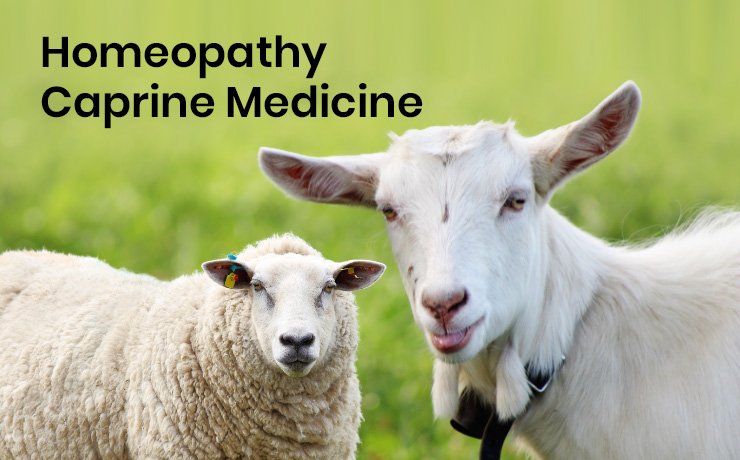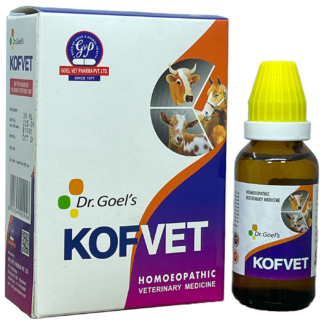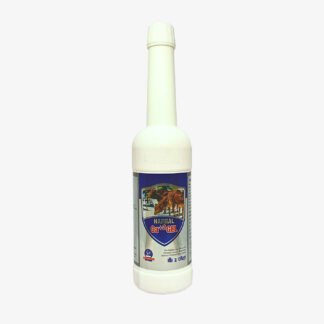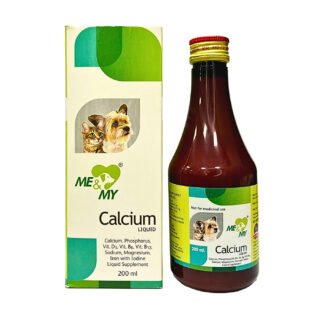Understand Skin Infections in Dogs Causes and Treatments

Skin infection in dogs, specifically caused by bacteria, is common, and many puppy owners are concerned about it. They can stem from a variety of conditions and present themselves in multiple forms, which causes them to be challenging to manage. This blog will include details on skin infections in dogs, which will include the following: causes, symptoms, the possibility of treatment, and measures that can be taken to avoid skin infections in dogs.
It is essential to recognize skin infections in dogs and treat them properly.
Causes of Skin Infections in Dogs
There are various causes of skin infections in dogs, and some of them may include the following:
- Bacteria: This condition is also known as bacterial-infected skin in dogs, and it is characterized by skin infections caused by either Staphylococcus or Streptococcus bacteria. These infections generally develop as a complication of another skin condition, such as allergy, cuts, or mite infestations.
- Parasites: Flea, mite, and tick bites cause itchiness, which makes the dog scratch its body and cause skin injuries. These injuries turn into open wounds that are prone to secondary bacterial infections in dogs.
- Fungi: Bacterial infections in dogs, like staph and strep, are also uncommon, but they may lead to severe itching, hair loss, and ringworm.
- Allergies: Hypersensitivity to foods, the environment, and fleas can cause irritations that result in skin infections due to their role in itching.
- Hormonal imbalances: Inflammatory diseases such as hypothyroidism or Cushing’s disease can change the skin’s structure and thus increase susceptibility to infections.
- Underlying medical conditions: Some health conditions, including immune suppressive diseases, make dogs’ skin vulnerable to infections.
Recognizing the Signs
Bacterial skin infections in dogs have symptoms that may vary in form. Here are some common signs to watch out for:
- Itching: It is the first and most common sign of a skin infection, as observed from a distance. It is usually red. Dermatitis, by definition, is normally described by excessive scratching, chewing, or licking that leads to hair loss, ulcers, and inflammation.
- Redness and inflammation: Symptoms of infected skin can include reddening, inflammation, and signs of inflammation such as redness, heat, and swelling of the infected skin.
- Hair loss: Skin diseases or infections are other diseases that may cause hair loss or poor matted fur on some parts of the body.
- Pustules or scabs: Bacteria attacks can cause pus-filled lumps or scabs on the skin.
- Crusting or scaling: Some signs associated with fungal infections include the development of crusts or scales on the skin.
- Odor: When the skin develops a foul smell, this is an indication that it may be infected.
Diagnosing Skin Infections
But if you feel your dog has a skin infection, you should take it to the vet for check-up and treatment. During a routine examination, the vet may palpate the abdomen and scan for symptoms of parasites, inflammation, or any other irregularities. They may also recommend additional tests like:
- Skin scraping: This entails scraping a small portion of the skin surface to determine whether the skin has mites or fungal components under microscopic analysis.
- Cytology: This includes using a microscope to study the skin cells. The pathologist can identify the type of cells involved in the infection and, in doing so, determine the reason why the infection occurred.
- Bacterial culture and sensitivity: A bacterial culture is vital in identifying the type of bacteria causing the infection and the antibiotics that will be effective against it.
Treatment Options
It is also noteworthy to mention that this skin disease in dogs can only be treated depending on the root cause of the infection. Here’s a breakdown of some common treatment approaches:
- Antibiotics for skin infections in dogs: In some circumstances, a vet may prescribe antibiotics in the form of liquids to be administered orally or topical preparations, such as creams.
- Antifungal medications: Superficial vaginal infections require antibiotics, while more severe STD infections require antivirals. Bacterial infections require antibiotics, while viral infections require antivirals; if there are fungal infections, antifungal agents are necessary, but the type depends on the fungus involved.
- Antiparasitic medications: If parasites are the cause, the vet will direct you to the most appropriate anti-flea, mite, or tick medicine.
- Medicated shampoos and conditioners: These may help soothe a sore throat, reduce inflammation, and flush out allergens or bacteria in the area.
- Dietary changes: In severe cases or if the vet soon realizes the animal is allergic to certain foods, recommendations can be made to change to a bland, hypoallergenic diet.
- Corticosteroids: To reduce inflammation and itching, prescription-strength creams, ointments, or even tablets of corticosteroids might be administered.
Finding the Right Medicine for Dog Skin Disease in India
Here are some pointers to consider when looking for the best medicine for dog skin disease in India:
- Consult your veterinarian: They can determine the infection’s origin and prescribe the most appropriate antibiotic.
- Follow the vet’s instructions: If the symptoms are subsiding, ensure that you are giving your dog the correct dosage of the medicine.
- Beware of over-the-counter medications: It is also necessary to ensure that one does not use these OTC medicines for their dog’s skin disease without consulting the veterinarian.
- Consider reputable sources: Parents should only buy pet medication from accredited outlets such as pet shops or veterinary pharmacies.
While numerous dog skin infection medicine options exist in India, consulting your veterinarian is crucial. They can diagnose the underlying cause and prescribe the most effective dog skin infection medicine in India for your furry friend’s specific needs.
Preventing Skin Infections in Dogs
Here are some essential tips for preventing skin infections in your dog:
- Maintain good hygiene: It is also necessary to clean your pet regularly and wash their bedding often.
- Parasite prevention: Select proper anti-flea, anti-tick, and anti-mite products from the market.
- Healthy diet: Ensure your pet has a good diet with all the nutrients needed for healthy skin and coat.
- Manage allergies: If your dog suffers from allergies, try to establish what is causing them and, where possible, seek to eliminate them. This can be done by modifying eating patterns, strictly following environmental management activities, or using allergy drugs.
- Regular vet checkups: You should discuss skin-related cases with your veterinarian and ensure you take your pet to the vet routinely to check and effectively treat them while still young.
- Maintain a healthy weight: Skin-related complications can also be highlighted since obesity is also a potential causative factor in acne. Ensure the dog does not gain too much weight by feeding them properly and regularly for exercise.
- Minimize stress: Stress often worsens skin conditions in dogs. Give them a peaceful and stimulating environment.
Skin problems on dogs can be a source of discomfort and frustration for both you and your furry friend. These issues can manifest in various ways, from excessive itching to redness and hair loss. If you notice any skin problems on dogs, consulting your veterinarian is crucial to ensure proper diagnosis and treatment.
Conclusion
Bacterial skin infections in dogs are not uncommon; however, early detection and treatment can help with the problem. Understanding the causes of skin conditions, the signs, and the treatment options will help ensure your dog is always comfortable. Therefore, prevention and early treatment are the determining factors in your pet’s health and those scratches your pet despises.
Additional Tips:
- Observe your dog’s behavior. Pay attention if your dog begins to scratch, lick, and bite more frequently. Such signs should be detected on time so that appropriate measures can be taken regarding skin problems in their early stages.
- Keep a log: Recording symptoms and responses to treatment of your dog’s skin problems will help the vet diagnose the condition.
- Consider additional therapies: Other treatments, like omega-3 fatty acids or probiotics, may sometimes be helpful for skin care. However, you should consult your veterinarian before considering the following options.
Therefore, the tips and recommendations highlighted in this blog will help prevent and manage skin infections in dogs and consequently improve their wellness. Lastly, please ensure your dog is always healthy and happy because that is all anyone would wish for in a pet!
 Australian Shepherd
Australian Shepherd Beagle
Beagle Belgium Shepherd
Belgium Shepherd Bernese Mountain Dog
Bernese Mountain Dog Border Collie
Border Collie Boxer
Boxer Bulldog
Bulldog Cavalier King Charles Spaniel
Cavalier King Charles Spaniel Chihuahua
Chihuahua Cocker Spaniel
Cocker Spaniel Dachshund
Dachshund Doberman Pinscher
Doberman Pinscher Dogo Argentino
Dogo Argentino French Bulldog
French Bulldog German Shepherd
German Shepherd Golden Retriever
Golden Retriever Great Dane
Great Dane Himalayan Shepherd
Himalayan Shepherd Indie Dogs
Indie Dogs Labrador Retriever
Labrador Retriever Pakistani Bully
Pakistani Bully Pembroke Welsh Corgi
Pembroke Welsh Corgi Pitbull
Pitbull Pomeranian
Pomeranian Poodle
Poodle Pug
Pug Rottweiler
Rottweiler Shih Tzu
Shih Tzu Siberian Husky
Siberian Husky Yorkshire Terrier
Yorkshire Terrier Abyssinian
Abyssinian American Bobtail
American Bobtail American Shorthair
American Shorthair Balinese Cat
Balinese Cat Bengal Cat
Bengal Cat Birman
Birman Bombay Cat
Bombay Cat British Longhair
British Longhair British Shorthair
British Shorthair Burmese Cat
Burmese Cat Devon Rex
Devon Rex Exotic Shorthair
Exotic Shorthair Himalayan Cat
Himalayan Cat Maine Coon
Maine Coon Oriental Shorthair
Oriental Shorthair Persian Cats
Persian Cats Ragdoll
Ragdoll Scottish Fold
Scottish Fold Siamese Cat
Siamese Cat Siberian Cat
Siberian Cat Sphynx Cat
Sphynx Cat






































